Durable unpretentious culture, Perovskaya Swanoliste, is considered one of the best decorative plants used for registration of various kinds of landscapes: from small flower beds to municipal parks. The velvet texture of silver leaves and the "lilac-blue cloud" of flowering inflorescences resembles a lavender and benefits a perennial from other decorative cultures. Landing and care for the semi-stationist does not require special knowledge or skills. About how to grow Persian on his plot, will be discussed in today's article.
PEROVSKIY WEEDE, DESCRIPTION OF THE Plant
This species refers to the kind of plants called "Perovskaya" from the family of Clanotkov. Unusual and difficult to perceive the name of the family were assigned in honor of the Orenburg Governor V.A. Perovsky. Often, abroad, the plant is also called the "Russian Sage" on the external similarity of perennials and typical musk aroma.
Externally, Perovskaya resembles mountain herbs, such as lavender or wormwood. At the same time, it is a relative of other, fragrant plants: mint, sage, souls.
- The territory of the Central and South-West Asia is considered to be the territory of Central and Southwestern Asia, where the semi-staple can be found in the steppes, on stony areas or dry forests. A sharply continental climate and depleted soils of Asia made it possible to form high endurance, drought resistance and unpretentiousness of the long-term blooming semi-staple.
- Perovskaya is a fairly high half-worker, densely seated purple-blue flowers. The height of the plant, on average, varies from 50 to 100 cm. Although, under favorable conditions, semi-uniform curtains can grow up to 1.5 meters.

- SINETBER PERFORMING PERSON, PEROVSKY WEEDE, has a particularly attractive decorative view during its long blossom. Although volume evergreen, with a shade of silver Kurtin look no less effectively without colors.
- Belece-Sizoy shoots that form loose curtin, hard, straight and numerous. The base of the stems gradually decide, and after the annual trimming plant "produces" new young shoots.
- Suggested, the rugged leaves have an elongated exhaust form, muted green-silver color and covered with easy-to-wear. Due to this bush, Perovskiy has an unusual leisky shade and pleasant to the touch velvet texture.

- Purple flowers in perennials are small, collected in thick inflorescences - metels. Due to this, it creates an impression of air and framing bush of a blue cloud from numerous delicate flowers.
- Flowers shrub long and continuously: from July to November, to the first frosts.

- Perovskaya Swanoliste contains a number of essential oils, due to which all parts of the plant retain a thin spicy, slightly mint and nutmeg aroma.
- Fragrant beautiful twigs of perovskiy also use as long-saving drunks or during dry bouquets.
- The dried parts of the aromatic culture found their use even in cooking, like fragrant and refreshing seasoning.
Perovskaya Swanoliste, varieties
PEROVSKIA ATRIPOLICIFOLIA - one of the most common cultural species of the whole plant.
Consider the most popular and beautiful hybrid varieties of this type of Perovskiy.
PEROVSKIY WINDOLISTY LITTLE SPIRE
- PEROVSKIY WINDOLIST LITL SPAYR - a hybrid obtained by crossing 2 types of perovskiy: wincing and wormwood. "Little spire" - the name of the variety is translated, it is distinguished by compactness and lowestness of neat kurturt. On average, the height of the bush reaches no more than 60 cm. Self-blue flowers are blown early and delight those surrounding to deep autumn. The variety is considered sufficiently winter and is grown in the open soil.
- Small curtains Little Spires lined as a decorative fence along the alley or garden track look. It is massive plantings of the plant winning emphasize the decorative type of perennials.

PEROVSKIY WINDOLISTY BLUE SPIRE
- PEROVSKIY WEEDE Blue Spire is a large and spectacular plant denoting a literally "blue spire". In height, the hybrid variety reaches up to 120 cm.
- Numerous, saturated, lilac blue shade Perennial flower will decorate any corner of the garden or rocarium.
Perovskaya Swan Filigran.
- Perovskaya Swanoliste Filigran - a hybrid variety with finely dissected patterned-filigree foliage, similar to a fern. In height, the plant reaches up to 1 meter, and the variety is allocated strictly vertical growth line. The color of the foliage is typical for the view - gray, flowering - long.
- Filigree is ideal for decoring open, solar borders and flower beds.
PEROVSKIY WINDOLISTY BLUE MIST
- The name of the variety is translated as "blue fog", thanks to gentle, blue-blue shades, perennial flowers.
- Flowers bloom before other varieties, flowering continues within 2-3 months.
Perovskaya Swanoliste, agricultural cultivation
Before growing perovskaya wincing on his site, it is necessary to familiarize themselves with the landing agrotechnology and the peculiarities of a multi-year blooming culture.
Place for landing perovskiy wincing
- Given the fact that Perovskaya is a solunular culture, the place for its landing should be selected open and sunny. Easy half is also acceptable. In the shaded place, the shoots of the semi-staples are pulled out and thinned, the bush becomes less decoratively attractive, the stalks are running and needed in a garter. Flowering under conditions of insufficient light will also be less abundant and not so long.
- Drafts and winds the perennial is not afraid, perfectly retaining its original shape due to although thin, but tough semi-restless shoots.
- As for the soil, the perennial prefers light drainage soils, with an alkaline or neutral medium reaction. Moreover, it is better to choose a dry place, without wasting moisture. The ideal option will be landing for a small slope, where the fallout will not accumulate, and the snow will be faster in the spring. Excessive humidity devotionally affects the development of many years of culture. Heavy, raw or "scyed" PEROVSKIY PEROVSKOE WARNING NOT PASS. This factor is important to take into account when planting plants and pre-prepare the soil, making it easy, loose, with a good drainage layer. To lower the acidity, you should make a mandatory lift of the soil. For planting plants, light sandy soil is perfect.

Agrotechnology landing perovskiy wincing
The PERovski seedlings landing procedure is not complicated and absolutely standard.
- Before boarding, it is important to properly prepare the soil: to switch the soil, make organic fertilizers (vegetable compost, humus). It is better to dilute the heavy soil to the sand, but to make it, and a meager - to focus. Sand, in particular, makes it possible to increase the water permeability of the soil and prevent the moisture in the further detrimental for the plant.
- For planting a perennial, an individual pit is preparing or if a large array of shrubs are planned to fall out, rolls over a solid ditch (by type of trench). The depth of the pit is relatively small, taking into account the surface lounge of the root system of the semi-staple. The main condition is the presence of drainage and the complete shower of the root of the seedling. As a rule, the sizes of the pit 2 times higher than the size of the land coma with a young plant.
- At the bottom of the landing pit, the drainage layer of broken brick or rubble is poured. The layer of large sand is falling apart.
- Then compost (or other organic fertilizer) is added to the pit, the soil layer and slightly seal.
- The resulting soil is watered, after which they exhibit a sapling, falling asleep its soil and periodically sealing the landing place to avoid the formation of "air pockets".
- The landing is important to carry out so as to preserve the natural community of the seedling. This agricultural reception will ensure 100% of the plant survival rate in a new place.
- The distance between Each Kruist Persochi should be at least 50 cm so that the culture can subsequently freely form lush and thick curtains.
Perovskaya can grow in one place dozens of years, with all this, the plant easily transfers the transplant to a new place.
Perovskaya Swanoliste, care
Unassuming culture, Perovskaya Swanoliste, requires minimum of care and attention.
- The plant perfectly tolerate dry hot periods, is not afraid of oppression from "aggressive" cultures, not demanding that the soil fertility, and easily "copes" with winter frosts.

Watering Perovskiy Lebedoliste
- Perovskaya practically does not need additional watering. Only in a particularly hot and arid period, you can pour bushes to support the abundance and duration of perennial flowering.
- The only exception is regular watering after the landing of Persinki saplings. Regular moistening of the priority circle is carried out until complete adaptation and survival of the plant. After that, the irrigation rate is significantly reduced.
- Watering is necessary under the root so that the water does not get on the stalk of the plant.
- The moistener and stagnation of water can lead to a planting of the plant.
Ruffle perovskiy swanoliste
- Excessively moistened soil, for example, after heavy rains, needs loosal and mulching.
- In addition, it is recommended to mandatory mulching with a surge compartment or small gravel after an annual (spring) bush trimming.

Feeding and making fertilizers for perovskiy wincing
- If in the period of planting the plant, the soil was enriched with nutrients of the deliberate fertilizers, additional feeding during the growth period is practically required.
- It is recommended to add wood ash or bone flour in early spring, immediately after trimming.
Pruning Perovskiy Lebedoliste
- In the autumn trim, Persovskaya does not need, evergreen shoots absolutely do not disturb the winter decorativeness of the curtains. In addition, in this form, the plant is much easier to cope with winter cold.
- In the spring, a complete trimming of the bush is carried out, since inflorescences are formed only on young shoots of culture. At the same time, all old shoots are removed, leaving only hemps, height, approximately 10 cm from the ground.
- In the absence of annual spring trimming, the appearance of the perennial is noticeably deteriorating, losing individual decorativeness and attractiveness. The inaccier Kush of Perovskii without trimming is weakened in growth and lags behind in development.
Zimovka Perovskiy Lebedoliste
- Perovskaya Swanoliste is distinguished by high winter hardiness and refers to the plants of the climatic zone 5.
- Perovskiya tolerates frost well, but, at the same time, the culture is very raw in the period of thaw and unstable change of weather. Therefore, gardeners are recommended to cover the shrub on the winter dry foliage and mulch the rolling circle. Remove such "plant shelters" in the spring, as soon as it starts to warm, so that the plant does not bother and not died.
- In the cold regions, for example, in the middle lane of Russia, it is recommended to cover the Kustovsky Pepper's bushes for the winter. Some gardeners use wooden drawers for these purposes covered on top of the runneroid.
- It is not necessary to use a polyethylene film as a covering material (where condensate will accumulate), as it is fraught with sampling and reinforcement of perennial.
- It is noteworthy that even if the shoots of Perovskiy were subjected to frozen in winter, they quickly restore and grow after the spring trimming.
Fighting pests and diseases of Perovskiy Swedoliste
- Perovskaya Swanoliste - Sustainable Diseases and Pests Plant. Essential oils and a specific smell scare away unwanted "guests" from the decorative bushes of perennial. For the same reason, the "neighboring" plants will also be protected from pests.
- Excessive overvailing and increased soil acidity can cause the development of the stem and root rot. Therefore, in preventive purposes, it is important to regularly loose soil, plug under the bushes of gravel or sand.
Garter of Perovskiy Lebedoliste
- In the case of excessive introduction to the soil of nitrogen fertilizers or cultivation of culture in the shade, the Koshes of Perovski becomes too elongated and need a garter. To prevent high-speed Kurtin to use mesh supports or special pegs.
- With a strong elongation of shoots, in the summer their shortening is practiced. After the forced trimming, the bush will allow new shoots, but the bloom will be delayed for several weeks.
The reproduction of Perovskiy Lebedoliste
Although Perovskaya and is a typical semi-staple, simply dividing the bush it does not multiply.
Culture is multiplied with 2 ways: seeds and cuttings. Consider the advantages and disadvantages of each method.
Reproduction of perovskiy swivel seeds
Plants grown from seeds are distinguished by increased endurance and cold resistance. Seeds for sowing is better to buy than to assemble yourself. This is explained by poor aging of seeds, especially in the cold regions, and hence the low germination. To speed up the process of germination of seeds, they are recommended preliminary (a month before sowing) to stratify at temperatures + 4-5 0WITH.
- It is possible to grow in its plot "Snetsavita" by seeding seeds into open ground. At the same time, Perovskiy will be able to bloom only for the 5th year after seeding.
- Sowing, as a rule, the early spring, as soon as the soil warms up to + 6-8 ° C. You can also sow "under the winter", as it happens with the natural self-survey of culture.
- It is possible to sow seeds on the garden immediately at a permanent place, or growing on the plot of a shot. In the second case, the seedlings are transplanted from the bed to a permanent place 2-3 years after sowing.
- Sowing seeds are carried out in shallow (2-3 cm) grooves, with a frame of at least 50-70 cm.
- Before sowing, the grooves are well spilled by water, seeds seeds and fall asleep with soil.
- Fast shoots slightly thinning and leave for further frustration.
Reproduction of perovskiy swivel cutlets
A vegetative method of breeding allows you to get the blooming semi-stares perovskiy for the next year after landing.
- To get the cuttings, at the beginning of summer, young shoots are cut (average part of them) about 10 cm long. Each full-fledged cutlets must have 2-3 interstices.
- The bottom leaves are removed on the cut branches, and the slice is soaked in the growth stimulator.
- The cuttings prepared in this way put into the container from the peat and sand mixture (1: 1) for further rooting. From above, the container is covered with a plastic "cap" or polyethylene film. It is important that the container necessarily had a drain layer, and the water in the ground was not stuffed.
- Care of cuttings is regular watering and ventilation "mini-greenhouse".
- The rooted cuttings are transplanted into the open ground either in the first half of the fall (so that young shoots have time to take root in the soil before the onset of cold weather), or in spring (when establishing steadily warm weather).
- In addition to the drawing, the reproduction is also practicing, which they pin down to the ground to obtain additional roots. After that, the rooted tanks are cut off, separating from the bush, and transplanted to a new place.
Perovskaya Swanoliste, where to buy
Purchase material for landing perovskiy swivel is in special nurseries, gardening centers or shops. It can be both seeds and seedlings of the future semi-station.
- Choosing seedlings It is important to draw attention to the appearance of young seedlings. Good healthy copies have a strong stem with several well-developed shoots. If there are signs of fading or rotting on the confusion - such seedlings are unlikely to come down in the site.
- Often, Persinki seedlings are sold in pots with prolonged fertilizers for the entire subsequent year. The convenience of such a container is that such seedlings can be planted in open ground from spring to the autumn itself.
- Family reviews growing in Perovskoy Lebedoliste indicate the obvious advantage of domestic seedlings from local nurseries, where seedlings are already adapted to certain climatic conditions and winters. Imported seedlings, unfortunately, less hardy and, as a rule, poorly carry the wintering.
- According to the reviews of most flowers, Perovskiya has greatly proven itself in different regions of the country as a rigorous and unpretentious plant, which a long period of time is pleasing to abundant flowering and, with all beauty, does not require much care.
Perovskaya Swanoliste in Landscape Design
Perovskaya Swanoliste is widely used in landscape design when designing garden and park areas, flower beds, lawns, alleys, etc.
- The plant is used both in individual landings and in group. Especially spectacularly observe mass landings of the semi-stabiliar along the alley, borders or tracks.
- Planting a flowering decorative perennial help to create live hedges, although not high, but very decorative.
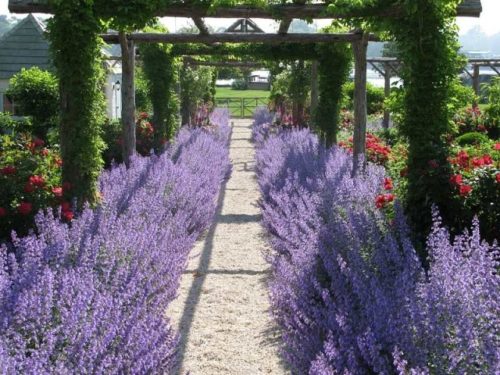
- Perovskiya is often used to decorate various rocaries, chains, alpine slides and flower beds with rocky coating. As a rule, the perennial is planted in the background of other, more low, plants, or at the foot of the artificially decorated elevation.
- High SIZY Curtains attract attention even during the cold season, speaking a bright accent against the background of others, which have long been "asleep" or faded plants.
- An unusual texture and color gamut long-term blooming culture involuntarily attracts gaze, follows the other, contrasting paint, plants.
- The best plants that combine with vertical kurtnins of Perovskii are considered roses, Malva, Echinacea, decorative cereals, chrysanthemums, astra and other companions for Perovskii not only in contrasting color, but also taking into account environmental preferences, flowering periods and adaptability to climatic conditions.
- Municipal landscaping of many cities has not been done without the use of PERovskiy during the design of garden-park zones or urban lawns. Flowering fluffy planting of the semi-stabilizer create a real illusion of "water stroke".
Summing up, it should be noted the main advantages and preferences of the culture - Perovskiy Swedoliste, knowing which, without difficulty, you can grow a semi-staple on its site.
- The plant is not demanding about soil fertility, drought-resistant, poorly tolerates acid soil.
- Culture is little susceptible to diseases and resistant to pests. The only "weak point" of perennials is the intolerance to excessive moisture or moisture.
- Perovskiy is characterized by high cold resistance, which allows it to grow it in different regions of the country, even with harsh winter climatic conditions.
- The perennial easily carries out and adapts to a new place, not demanding a transference of dozens of years.
- High-cleaning qualities and unpretentiousness of culture brought perovskaya in the rank of one of the most favorite landscape designers plants.
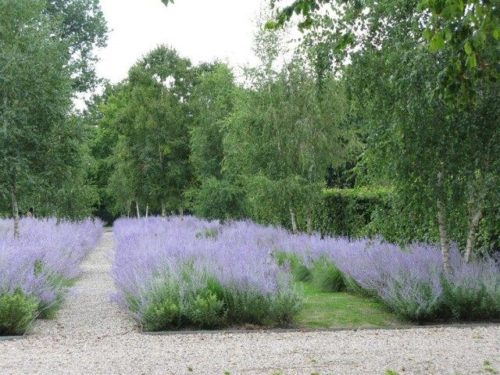














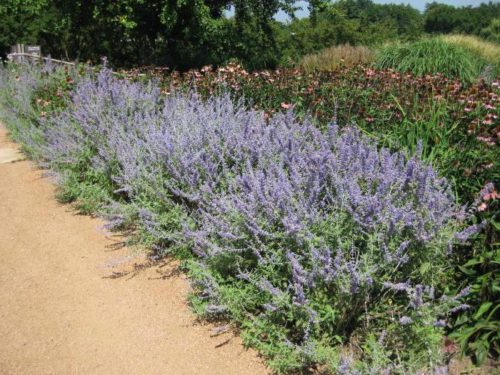
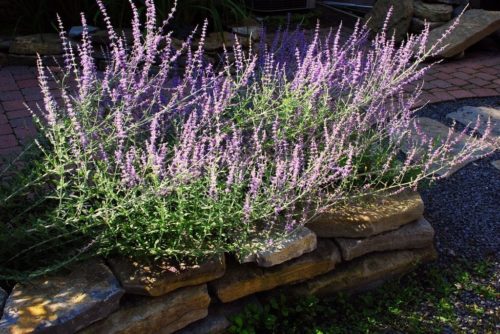
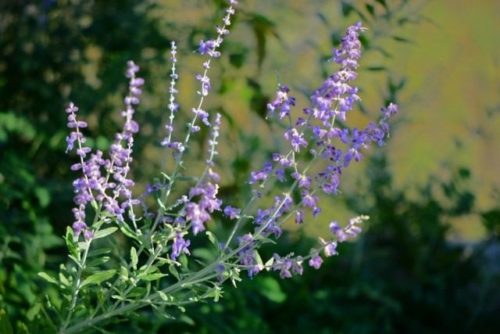
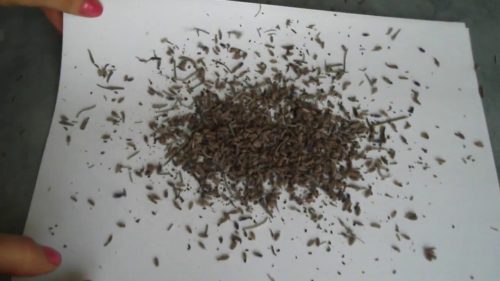
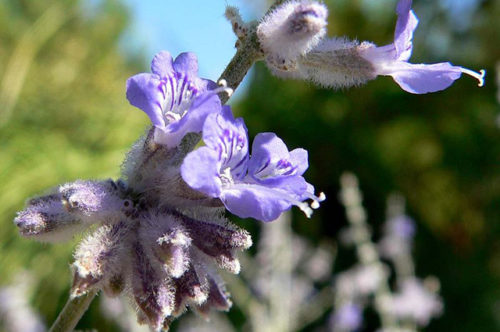
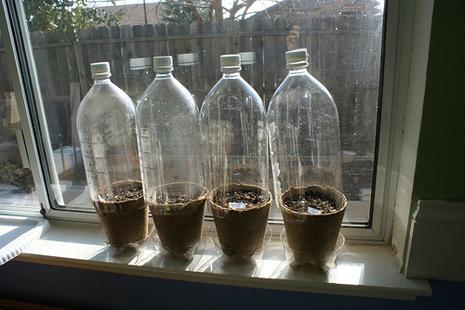
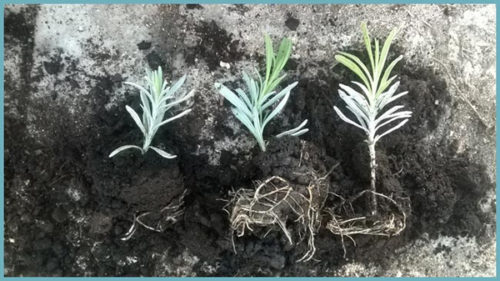
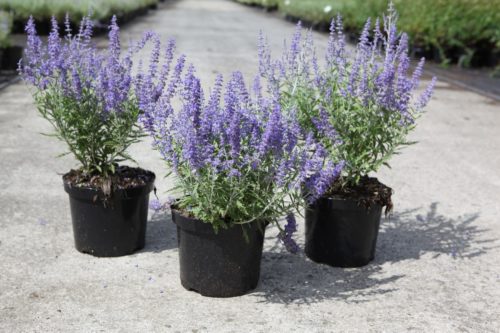
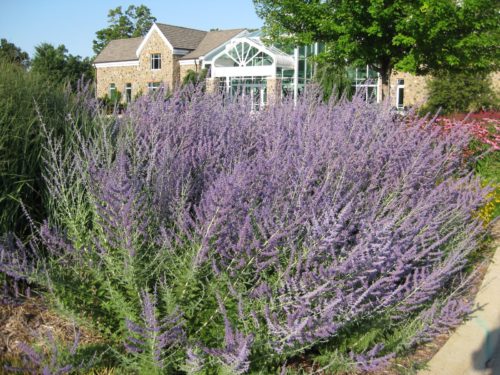

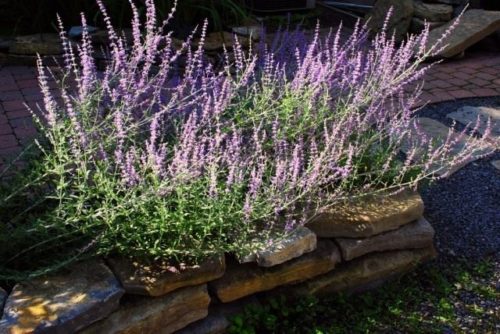
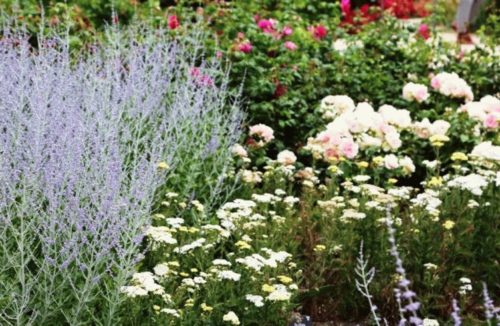
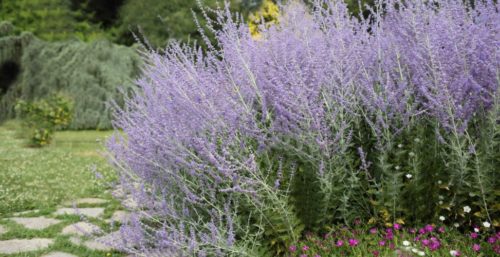












 Start a discussion ...
Start a discussion ...